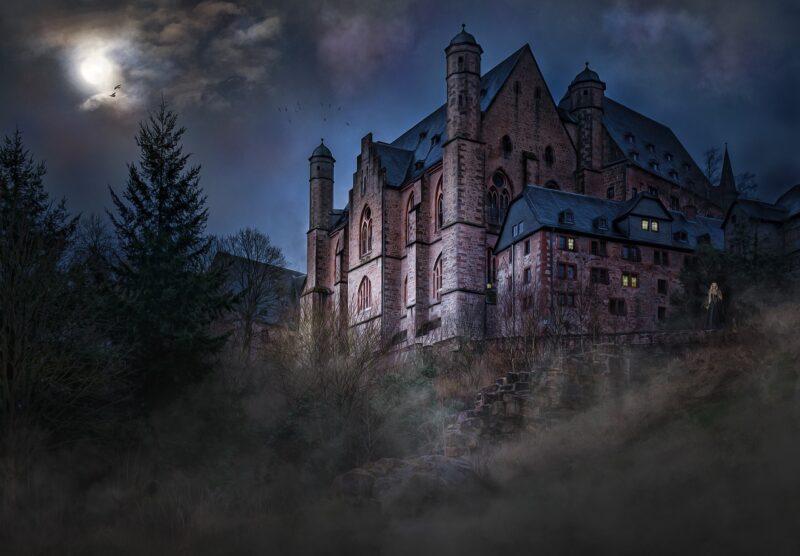The Ghostly Story of the White Lady Seen in Haunted Castles Worldwide
November 15, 2024

The legend of the White Lady is one steeped in mystery, sorrow, and intrigue that has captivated the imagination of people all around the world. A spectral figure donned in white, this haunting apparition appears in many castles and historic sites, often accompanied by tales of tragedy and loss.
From Europe to Asia, the presence of the White Lady is a testament to the enduring nature of folklore and the universal themes of love and loss that transcend borders. In this detailed exploration, we will delve into the origins of the White Lady legend, share some of the most notable sightings of this ghostly figure, and examine the cultural significance of her apparitions.
1. The Origins of the White Lady Legend
The tale of the White Lady can be traced back to ancient myths and folklore. Across various cultures, the presence of a ghostly woman dressed in white is often linked to themes of grief and betrayal. In many stories, the apparition is believed to represent a lost love or a spirit forever wandering in search of closure. Historical events, such as wars, betrayals, or ill-fated romances, often serve as the backdrop for these tales.
In medieval Europe, castles and noble estates became focal points for these somber stories. Many noblewomen met tragic ends due to the constraints of society or dramatic life events, such as betrayal by a loved one or the death of a child. These women, it is said, return as the White Lady to mourn their fates.
Some classic origins of the White Lady legend include:
- The Lady of the Lake: In Arthurian legend, the Lady of the Lake is often portrayed as a mystical woman who grants King Arthur his sword Excalibur. Some later stories depict her as a sorrowful figure dressed in white, mourning her tragic fate.
- Royal Betrayals: Many White Lady stories stem from historical figures, often involving queens or noblewomen betrayed by their husbands or family members, condemning them to remain in the realm of the living as restless spirits.
- Cultural Correlations: In cultures worldwide, similar ghostly figures appear, often known as La Llorona in Hispanic culture or the Weeping Woman in various Indigenous cultures, reinforcing the notion that such spirits are universally recognized.
These legends not only make for entertaining tales but serve as cautionary stories that examine the consequences of love, betrayal, and unresolved emotions.
2. Famous Sightings of the White Lady
The mystery surrounding the White Lady has led to numerous reported sightings worldwide, with each region adding its unique twist to the tale. Here are some famous locations where the specter has reportedly been seen:
- The White Lady of Rachna Lake, Pakistan: In the pre-independence era, she is said to roam the shores of Rachna Lake, where a noblewoman, who lost her beloved, drowned in despair. Locals claim to have seen her weeping along the banks at twilight.
- The Ghost of the White Lady at Castle Houska, Czech Republic: This gothic castle is rumored to house the spirit of a noblewoman who was tragically executed. Witnesses describe seeing her figure gliding silently through the castle halls, dressed in flowing white robes.
- The White Lady of Kensingston, England: The legend centers around a lady known to wander Kensington Garden in search of her lost children. Visitors have reported seeing her ethereal figure and hearing her cries for her children on misty nights.
- The White Lady of Gelnhausen, Germany: Within the ruins of a medieval castle, the spirit of a woman who lost her lover during a siege is frequently seen. Local legends say that she appears every year on the anniversary of his death, mourning the love she lost.
Each sighting adds to the mythos surrounding the White Lady, altering her story with the passage of time while remaining rooted in themes of longing and sorrow.
3. The Cultural Significance of the White Lady
The tales of the White Lady transcend simple ghost stories; they reflect societal values, fears, and the human condition. Here are several ways in which these narratives hold cultural significance:
- Symbol of Feminine Grief: The figure of the White Lady often embodies the pain and suffering experienced by women within patriarchal societies. Her echoes resonate with the struggles faced by women throughout history, encompassing themes of love, betrayal, and sacrifice.
- Reflection of National Identity: Many countries have their versions of the White Lady, using her story to connect their national identity to deep-rooted historical events and cultural values. These tales become part of national folklore and cultural heritage, reflecting the shared experiences of their people.
- Cautionary Tales: The haunting of the White Lady often serves as a moral lesson, warning against betrayal, loss, and the need for closure. As stories of her life and death spread, communities use them to address societal taboos and fears surrounding loss and heartbreak.
Through the lens of the White Lady, societies grapple with their internal wounds and collective memories, creating a tapestry of rich folklore that endures through time.
4. The Fascination with Ghostly Legends Today
Today, the attraction to ghost stories, and particularly the legend of the White Lady, has found a renewed interest among enthusiasts. Haunted heritage tours, paranormal investigations, and the popularity of horror fiction pay homage to the stories that have gripped our imaginations.
Modern technology has allowed for the documentation and sharing of ghostly sightings and experiences. Video evidence, ghost hunting apps, and social media platforms have cultivated communities that believe in and challenge the legends surrounding the White Lady. Additionally, universities and scholars are studying folklore and supernatural beliefs, attempting to understand their sociocultural implications.
The eerie allure of the White Lady transcends cultural barriers, exemplifying humanity’s fascination with the unknown and our desire to connect with those who came before us.
Conclusion
The legend of the White Lady is a haunting exploration of love, loss, and the enduring power of folklore. Her ghostly presence serves as a constant reminder of the fragility of life and the undying nature of human emotions. Wherever her story is told, she draws us nearer to the past, allowing us to confront our deepest fears while finding solace in the shared experiences that connect us all.
So, next time you hear a whisper about the White Lady or catch a glimpse of her in the distance, remember the tales that surround her and the universal truths they hold about humanity’s perpetual dance with grief and remembrance.








